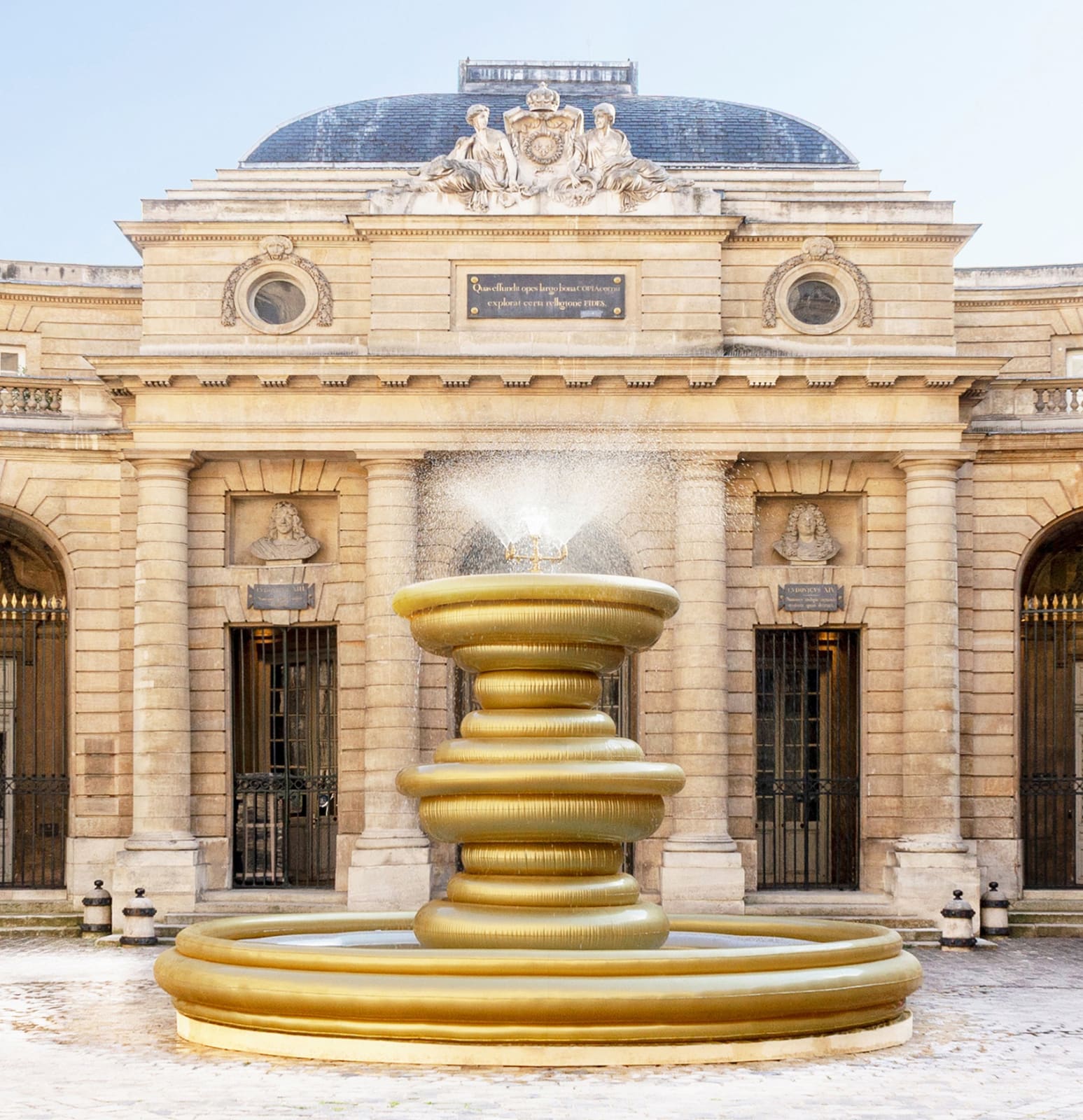Inflatable Wishing Fountain
Coproduction Bina Baitel / Monnaie de Paris, 2022
To celebrate the installation of this fountain, a cocktail will be organized at the Monnaie de Paris on Thursday, September 8.
With the support of the Pernod Ricard Foundation
The Monnaie de Paris (The Paris Mint) has given carte blanche to the artist Bina Baitel to create a fountain in the main courtyard of this historical establishment in the center of Paris.
Echoing the current exhibition “Monnaies & Merveilles” (Currencies & Wonders) that presents the rituals of coins throughout the world, Bina Baitel imagined the Inflatable Wishing Fountain.
The Fountain revisits an ancient European ritual that is still very much alive today, and which consists of throwing a coin into a water source to attract good fortune and make wishes come true.
Inspired by the construction principles of urban fountains and inflatable objects, the inflatable fountain questions the collective imagination of architectural and industrial codes.
The architectural language is thus borrowed both from the monumental fountain, a common element of the urban landscape since the Roman Empire, and from the inflatable swimming pool, a familiar object since the middle of the 20th century, resulting from technological progress and the emergence of plastic.
Made up of buoys on top of each other, the inflatable fountain template is deliberately underlined by the silhouette of a classic fountain whose water would gush from a large basin of water.
Instead of a robust and durable structure, a temporary and transportable monument is erected with the help of flexible and light materials. The fountain, a source of water that cannot be dislodged by definition, becomes a mobile and flexible object.
In between an industrial product and a contemplative sculpture, the installation questions the new boundaries between technological evolution and traditional monuments. Bina Baitel merges the industrial universe of inflatable products with the architectural language of urban fountains.
The combination of traditional principles of construction and common contemporary industrial materials resulting from mass production, thus calls on various references drawn from our collective memory. These familiar elements are moved from the field of utility to that of contemplation and reflection.
The fountain suggests a dialogue with the Monnaie de Paris and its surroundings, through its appearance that echoes the building’s classical architectural design, as well as through its golden hue, evoking the color of the precious metal, and through its appropriation of the industrial processes familiar to the manufacturer.
La Monnaie de Paris (The Paris Mint) is the oldest of French institutions and one of the oldest enterprises in the world.
Its duty is the public service of minting current euros for France and the production of foreign currencies.










